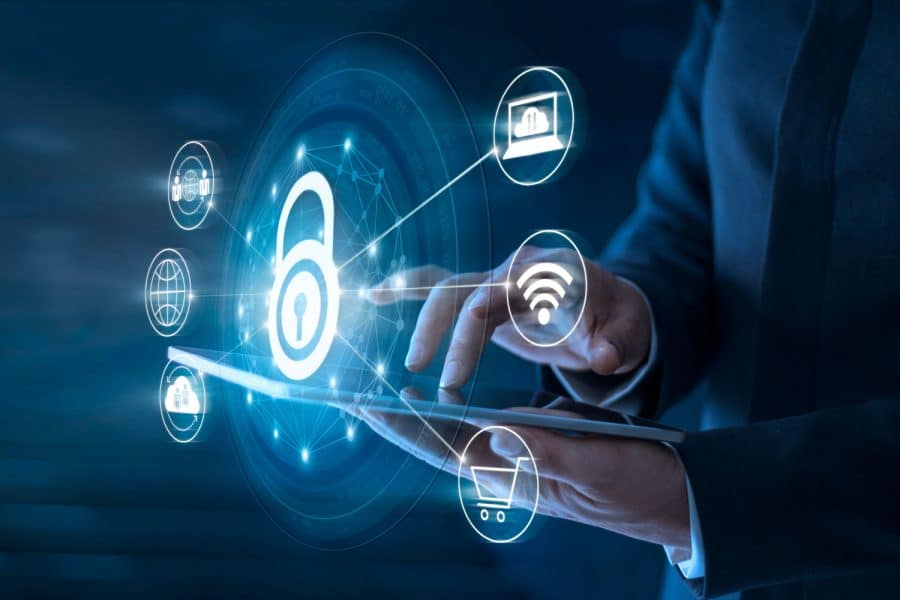With the arrival of COVID-19, both our domestic habits and the way we work have been disrupted. All companies that have been forced to immerse themselves in teleworking will have noticed a significant increase in the number of virtual communications. All communication is on the network, and with it, all the risks that this entails:
Did you know that the total volume of threats directed at email whose content is related to COVID-19 already represents the largest number of cyberattacks based on a specific theme?
WHY HAVE THE NUMBER OF ATTACKS DIRECTED TO YOUR EMAIL INCREASED?
Due to the large number of people who are currently teleworking from home, many cybercriminals have decided to take advantage of the situation of confusion and uncertainty, this is because the large number of people who are teleworking do so with far fewer security measures. than the ones they would have in their offices.
To help you prevent, we want to make you aware of the main risks of using email:
RISKS OF USING EMAIL
According to different studies, the number of emails containing malware has grown to 70%, while there has been a 30% increase in those that aim to steal credentials. Most of these emails attempt to obtain the victim's passwords, using fake pages that clone the look and feel of Gmail or Office 365 to ask people to enter their username and password. That is why if ever after clicking the mail button, a screen opens asking you for a password, we do not recommend typing it.
Another very recurring situation during these months of teleworking is having shared a file by mail and leaving it saved because you know that you will be able to retrieve the document at any time.
The email not only is it used as a fast and cheap means of communication, but a large number of companies use it as a way of store your data. This means that valuable information assets live on your email servers. It is a problem that protected confidential information is left stored in inboxes, not encrypted, as it can present a significant number of risks to certain attacks.
In these cases, it is important to remember that it is preferable to host this type of document if you need to share it on the server or cloud storage provider and include passwords or access limitations only for company personnel or for the email of the person to whom you want to share it.
Adding to these risks is the fact that email is the main tool used by hackers and cybercriminals to distributer malware, including ransomware, for the purpose of gaining unauthorized access to an entity's networks and information. A sizable percentage of the largest data breaches have occurred as a result of phishing-based email attacks, and while email filtering is a useful tool, it cannot be relied upon alone to block all malicious emails.
Another of the risks of communication via email occurs in the internal communications of the company. Many times we have informal communications with our colleagues through email and this can become a source of vulnerability. Therefore, it is advisable to avoid these types of email communications or, if they are essential, to do so through tools such as Slack, Microsoft Teams or Intranet to avoid the risks of email attacks.
WHAT HAPPENS WHEN PRECAUTION IS NOT ENOUGH?
Surely you have heard that the best tool to protect yourself against a cyberattack when it is directed against your email inbox is "not to be fooled" by the tricks of our attacker. And it is partly true, but often insufficient.
Although the main measure to avoid being the victim of a cyberattack directed at our email is to have sufficient knowledge and be very careful, it is often impossible to detect the fraudulent nature of the email or the interlocutor we are dealing with.
The risks are multiplied when we are not speaking in individual terms, but rather these attacks occur against a company with dozens of employees, susceptible to becoming weak gateways to cyberattacks.
It is at that moment when the software helps us and reaches beyond where human capacities do.
Tranxfer is the most secure tool dedicated to sending and receiving files in the world. It is software specifically designed to help companies protect themselves against possible cyber attacks by keeping your data always protected.
MOST COMMON ATTACKS THROUGH EMAIL
Given that e-mail is the quintessential professional means of communication and in many cases it is used to communicate with unreliable external organizations, the possibilities of risk and attack object increase.
Cyberattacks can exploit email to gain control of an organization, access sensitive information, or disrupt IT tools' access to resources.
Common threats to email systems include the following:
- PHISHING
The phishing email is a cyberattack technique that aims to attempt to steal confidential business information.
Phishing-based emails often pretend to be from a known contact and are they mask with official company emblems, often targeting vulnerable accounts and lower-level employees.
In most cases, these malicious emails contain links to sites that dispense malware or request sensitive information. The best protection against this type of attack is a surveillance network that monitors communication inside and outside the company.
2. SPOOFING
Fake email is a strategy used during spam and phishing attacks. Forging an email header to make it appear as if it came from within the company attempts to confuse employees into providing sensitive information or, in some cases, banking-type transactions.
While diligence is the best method for dealing with phishing attacks, businesses should also look for software that improves email security.
3. MALWARE
The malware, or malicious software, is a virus that contains an encoding programmed to attack and damage data, technical equipment or entire systems. Trojans, viruses, spyware, worms, adware, and botnets, among others, are types of malware.
In most cases, malware is delivered via email during phishing and spam attacks. During an attack, multiple emails containing a virus are sent posing as a company. After being opened, the malware infects the system and causes damage to it.
Teaching company employees is the first line of defense against malware. If someone receives an email from an unknown source and with a large attachment, it's best to delete it immediately. Retarus will serve as a defense against this type of attack.
4. RANSOMWARE
Ransomware is a specific type of malware that attacks the entire computer system and blocks access to users until the financial demand (ransom) is paid to the author. Email security threats like this often occur during other large-scale attacks when targeting multiple users within the company.
DO YOU KNOW TRANSFER?
The tool has been developed under the highest standards in terms of technology without neglecting the simplicity of its interface. In terms of ease, Tranxfer allows you to work under simple steps such as:
– Selection of the file and recipients.
– Writing the subject and message to share.
– Configuration of the characteristics of the shipment (only visualization, expiration date, evidence of the different events, etc.)
If your business wants to implement an effective system to fight cyber attacks through email, we help you solve your problems with Transfer.
You can contact us in this page for any questions you have.
Now that you know what the risks of email are, we invite you to find out about how to combat Shadow IT.









